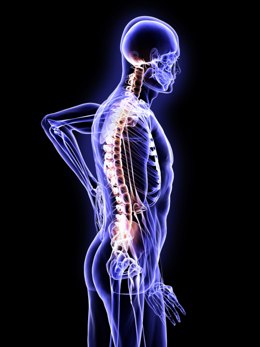A herniated disc is a condition in which the cushion below the spinal vertebra is pushed out of its original position due to either old age, or a back injury. There are the various procedures that you can opt for, in order to treat this ailment.

A herniated, or slipped disc, can be very painful, as the spinal cord and nerves feel a pinch. When this happens, the nerves are not able to send correct signals, or sometimes, not able to send any signals to the brain. A slip in the neck can cause you to feel something similar to an electric shock, while in case of one in the back, you experience severe lower back pain. Some patients also feel numbness, tingling sensations, muscle weakness, and unbearable back pain. Most often, your physician can diagnose this, and recommend suitable treatment options. It is advisable that you get an X-ray, MRI scan, a physical examination, and a second opinion on your case, before treating the condition.
Non-Surgical Options
There are several therapies that can relieve pain and help you resume daily activities; they largely depend on the severity and the duration of the pain experienced.
Home Remedies
Treatment at home with some extra care is possible. Avoid heavy exercises, and apply ice and heat packs on the point of injury. This makes the disc slip back into its original position, hence, relieving pain. Isometric exercises and selected massage techniques also help. Exercises that enhance back strength, such as prone press ups and floor bridges, bring long-term relief from the problem, and also act as deterrents for future complications.
Physical Therapy
Specific exercise plans to treat the affected region, devised by a physical therapist, can also help. Chiropractors model individual exercise plans for every case, as a large majority of patients find relief by physical therapy, making it a popular remedy. Physical therapy also reduces the risk of injury, and helps prevent recurrence of the problem. Physiotherapy and hydrotherapy help relieve the pain and strengthen the muscles.
Medication
Physicians, after diagnosing the symptoms, generally put patients on a non-steroidal anti-inflammatory drug (NSAID) program. These medications fight the inflammation, which may be the root cause of the nerve pain. Sometimes, muscle relaxants and painkillers are prescribed for a few days for relieving the back pain, although they only provide temporary relief and do not help the condition in the long-term.
Spinal Steroids
Oral steroids like prednisone and medrol are used, and on rare occasions, epidural steroid injections are also administered. Cortisone injections are given around the nerve roots, and the skin is numbed with local anesthetics before giving these injections. They reduce the inflammation around the nerves, and stimulate the release of anti-inflammatory proteins.
Surgical Options
Surgery is recommended only in a few cases, after non-invasive treatments and therapies do not yield results. Patients with substantial pain, weakness, and signs of cauda equina syndrome, are suggested to go for a surgical procedure. Discetomy is the most preferred method of surgery used in this condition. In this type of surgery, a 2-3 inch incision is made on the back, and the material that has slipped out, is cut. The incision is then sutured closed. The recovery time in the hospital is about 2-3 days. Post-operative recovery is considerably fast and pain relief is instant, but, the procedure related pain is experienced for several days. Two other surgical options are endoscopic and microscopic excision, which are used in very rare cases.
Lifestyle changes and change in rest patterns are necessary for a full recovery. Although there are several remedies, it is imperative that the person does extensive investigative tests before choosing a treatment. Activity, age, and the pain experienced, can also factor into the decision.


 A herniated, or slipped disc, can be very painful, as the spinal cord and nerves feel a pinch. When this happens, the nerves are not able to send correct signals, or sometimes, not able to send any signals to the brain. A slip in the neck can cause you to feel something similar to an electric shock, while in case of one in the back, you experience severe lower back pain. Some patients also feel numbness, tingling sensations, muscle weakness, and unbearable back pain. Most often, your physician can diagnose this, and recommend suitable treatment options. It is advisable that you get an X-ray, MRI scan, a physical examination, and a second opinion on your case, before treating the condition.
A herniated, or slipped disc, can be very painful, as the spinal cord and nerves feel a pinch. When this happens, the nerves are not able to send correct signals, or sometimes, not able to send any signals to the brain. A slip in the neck can cause you to feel something similar to an electric shock, while in case of one in the back, you experience severe lower back pain. Some patients also feel numbness, tingling sensations, muscle weakness, and unbearable back pain. Most often, your physician can diagnose this, and recommend suitable treatment options. It is advisable that you get an X-ray, MRI scan, a physical examination, and a second opinion on your case, before treating the condition.